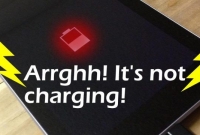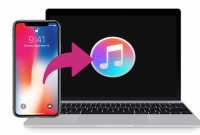
Single Page Application: Hottest trend to watch for in 2020
- By PRIYA --
- Thursday, 12 Mar, 2020
Single Page Application
The Single Page Application is one of the hottest trends in mobile app development and stands as a technique for the design of a webpage that will load fast on the screen of a smart device. This new approach helps meet the public’s expectations of a mobile experience that parallels what they have with their desktop or laptops. Today, the quality of web design includes the site’s ability to retain a visitor. Long loading time correlates with lost revenues. Only one second separates the engaged viewer and the user who gets too impatient and clicks away without even seeing the webpage. The Single Page Application improves the customer experience by providing immediate responses.
When is a website fast enough?
The definition of “fast enough” may be subjective. Google describes it as an amount of time small enough that a user remains focused on the experience and does not get distracted by the time lag introduced by the browser to server communications. User impatience can be measured statistically.
Out of the 42.6 percent of the world’s population, reported by BankMyCell, that own a smartphone, most will tolerate up to two seconds for a website to appear. More than half will abandon a slow site after three seconds. Google recommends an app download time of fewer than two seconds, and once downloaded, the website needs to respond in less than 100 milliseconds.
What is a Single Page Application?
Single Page Application, or SPA, is a website format consisting of a single HTML file with web appearance and functionality working in the browser and encoded in JavaScript. Examples of SPA include Gmail, Facebook, Google Drive, and GitHub. The application code gets loaded once. Rendition and web management is performed on the client-side. When an action is triggered, the page does not get wiped away, nor does it get reloaded with refreshed content from the server. Only new data gets communicated to and from the server.
SPA contrasts in operational efficiency with Multiple Page Applications or MPAs. MPAs are the more traditional web design, where websites are comprised of multiple HTML files linked together in a hierarchical structure and sent out from an internet server. These websites typically utilize 1.3 MB to 2.5 MB of content on average, according to MachMetrics. The time needed to download the files gets lengthened by mobile phone CPUs, slower than desktop browsers, and graphics interfaces that feed pixel-laden data travelling through cellular networks with a lower bandwidth than a desktop connected to a Wi-Fi system.
Benefits of SPAs
Single Page Applications give the appearance of seamless user experience with simple layouts, easy navigation, adaptive format to various mobile screen sizes, and communications between browser and server kept to the absolute minimum.
As the format only uses one HTML file, the site’s entire content resides in a single location on the client-side. Navigation is far simpler with no page hopping or the associated time that it would take to load other pages.
Debugging and upgrading become simpler with the swift load times, especially within the Chrome browser’s inspection function. Additionally, sharing SPA formatted sites is easier to do on social media due to the small number of files to load, enabling more traffic to come to the site.
The SPA format allows developers to enhance the site’s API or Application Programming Interface. Most notably, SPA formatted sites utilize special JavaScript frameworks to cache input data into a local database. Such frameworks allow data to be accessed and stored on multiple devices even when offline, enabling work production to continue wherever and whenever the user likes. Google Drive and Gmail are noteworthy examples of this function at work.
Disadvantages of SPAs
Though SPA formatted sites are modern and capable of remaining up to date, there were and still are downsides to using this format. Knowing the dangers and understanding how to rectify them is critical to know. Sites using the SPA format require JavaScript to be both installed and enabled for them to function properly. Though it can retain its appearance after it loads, the site will be severely crippled in its functionality if JavaScript is disabled within the browser at any time.
Features such as data retention, search functions, and user input will not function. SPA formatted websites are less visible to search engines because the format’s generation method, called Asynchronous JavaScript and XML or AJAX, does not refresh the server when it automatically updates the website. The workaround involves sending data to the server help register in search engines more frequently.
SPAs are vulnerable to memory leaks and Cross-site Scripting attacks. Memory leaks happen when script programs fail to discard no longer needed user information, causing a slowdown within the device. Cross-site Scripting, or XSS, is a malevolent code that takes advantage of the SPA’s coding foundation on the client-side. There is a wide range of severity for these attacks. Benign attempts may be cookie thefts. Severe attacks lift users’ private information typically targeting a website that solicits user-input comments. These situations can be averted with a scanner for malicious code.






